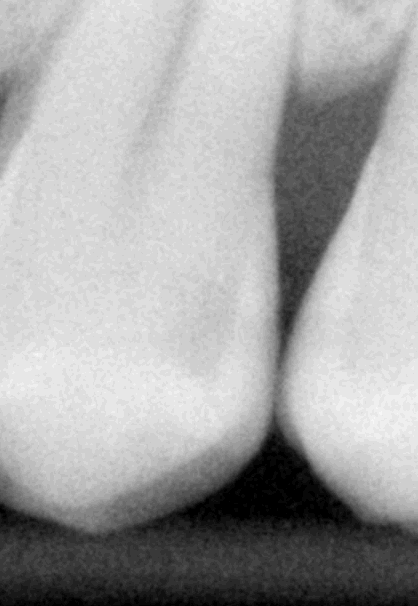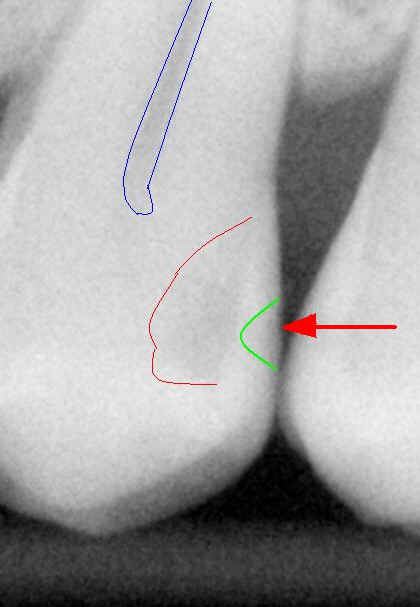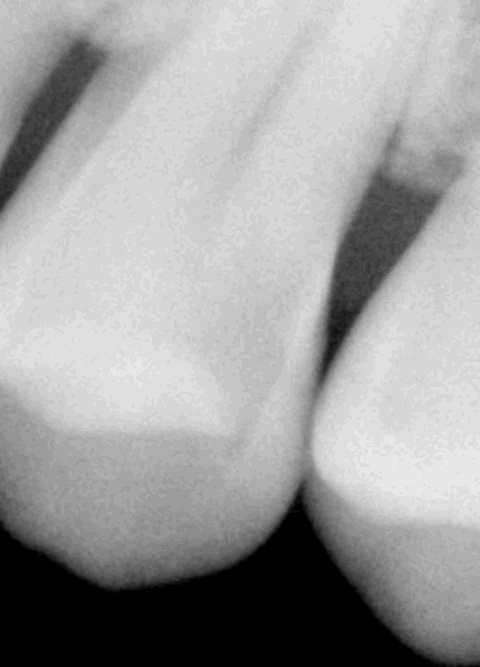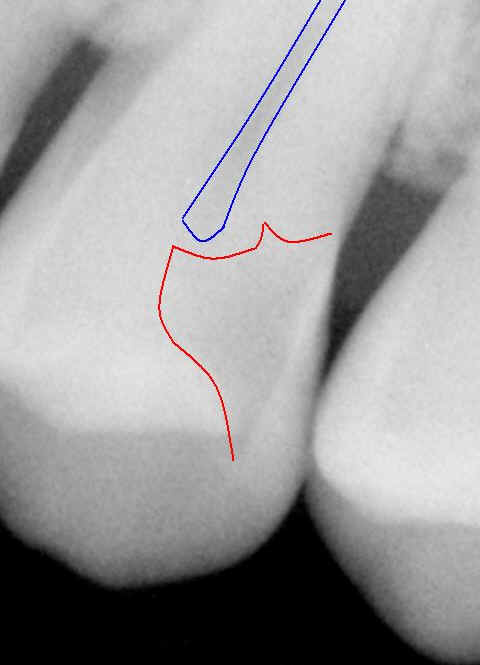 |
 |
|
Fig.1 |
Fig.2 |
 |
 |
|
Fig.3 |
Fig.4 |
 |
 |
|
Fig.1 |
Fig.2 |
 |
 |
|
Fig.3 |
Fig.4 |
Dental Education Lecture: Essentials of Flossing
In the lecture What will happen if we do not floss, we mention that flossing can prevent both gum disease and cavities between the teeth. Today we have a typical example. A gentleman in his mid-twenties has apparently very good oral hygiene. You may notice healthy pinkish gums in the picture of Which is implant. He brushes very well and returns to clinic for cleaning on regular basis. But he does not floss. In spite of good-looking gums, he has bad breath.
One day we carefully reviewed his X-ray taken 1.5 years ago and spotted a small cavity on the side of a premolar tooth (Fig.1). We took a new X-ray film. The cavity is bigger (Fig.3). In order to let reader understand better, we trace the outline of the cavity as red in Fig. 2 and 4. The green line represents an initial point of the cavity (inside the enamel). You may realize that the cavity starts between the teeth (red arrow in Fig.2). If we floss to keep the area clean, the chance of getting cavities there is quite low.
When we placed the filling, the tooth was still intact outside, beautifully white. The tooth is above the teeth labeled 1 and 2 in lecture Which is implant. But we had to fix the problem, because the cavity is pretty close to the nerve (blue outline in Fig.2 and 4). Probably in six month to twelve months, the cavity may extend to the nerve and causes severe toothache. We have to do root canal.
Xin Wei, DDS, PhD, MS 1st edition 10/13/2009, last revision 10/25/2009